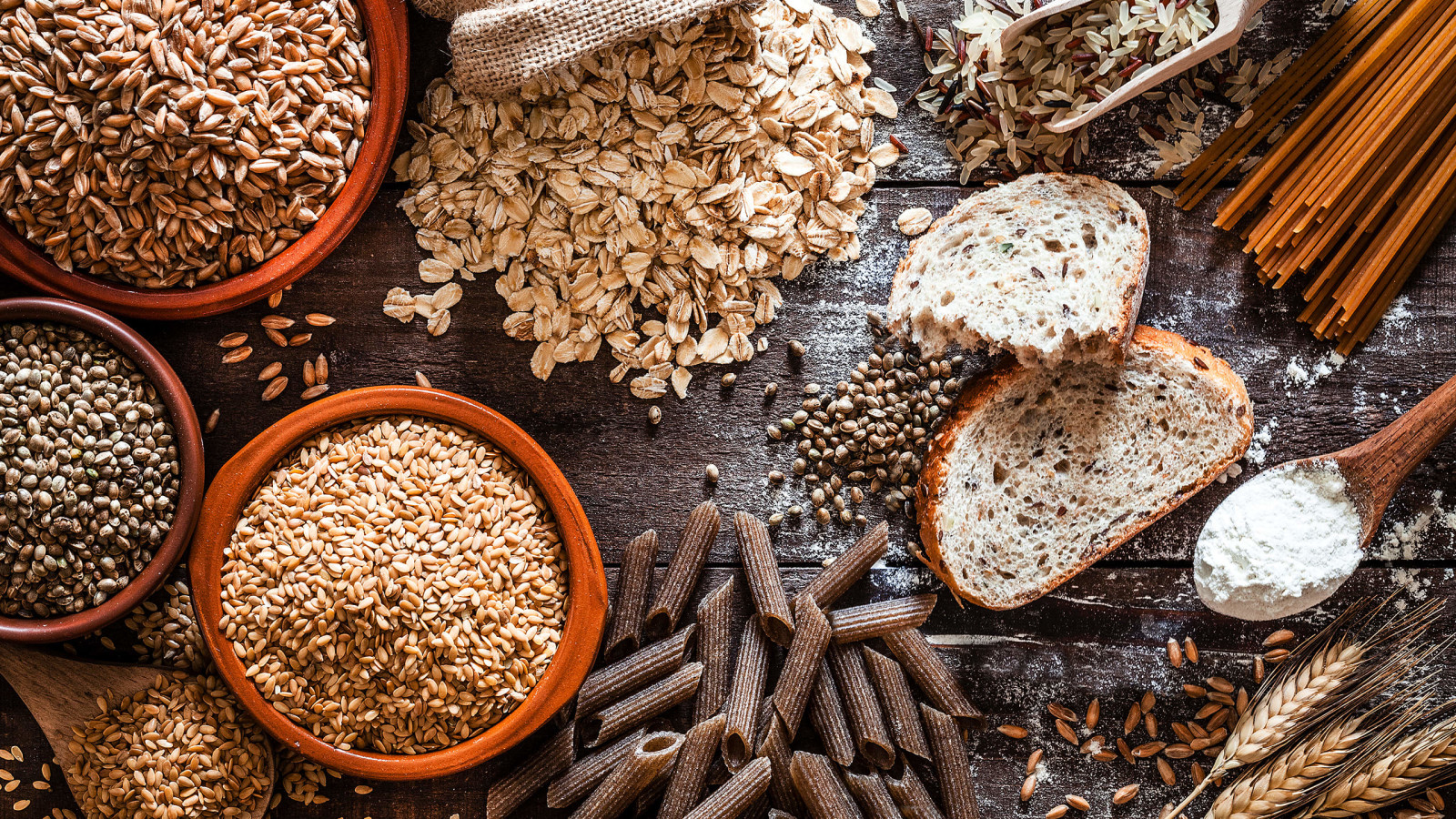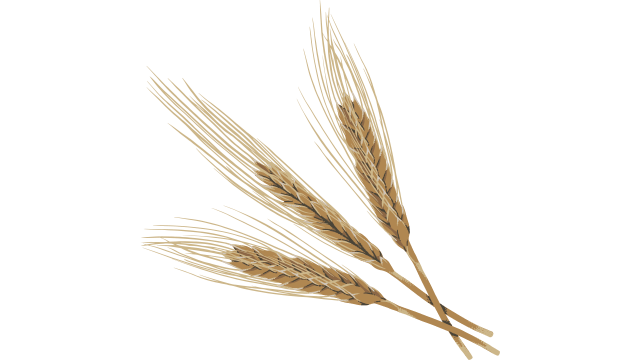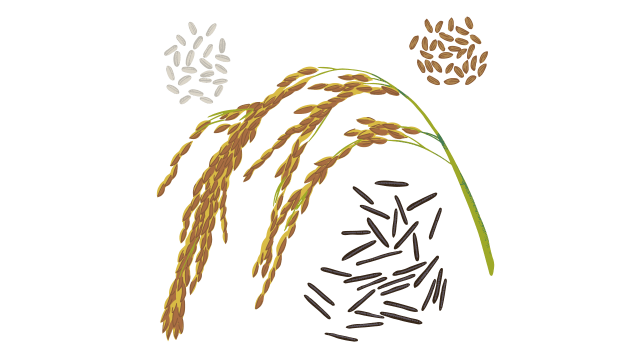Understanding Your Carbs

Carbohydrates are the fuel that offer a flavor-packed adventure on your plate. They provide glucose, which is converted into the energy your body needs to function all day long. Carbohydrates, together with fats, fiber, and protein, form the foundation of our diet.
Simple Carbs & Complex Carbs
Carbohydrates fall into two categories: simple carbohydrates and complex carbohydrates. The distinction between the two is based on how the body processes and digests each type of carb, their individual chemical composition, and their GI (glycemic index). It is recommended that complex carbohydrates should make up about 45 to 65% of your daily calories.
Simple Carbohydrates: Composed of only one or two sugar units, simple carbohydrates are rapidly absorbed by the body and converted into glucose. They provide quick spurts of energy but have low nutritional value. Processed foods that are high in simple carbohydrates include candy, donuts, cookies, canned fruit, white sugar, syrups, and any drink or snack with large amounts of added sugar. Diets high in simple carbs are full of empty calories, leading to a cycle of energy highs and crashes as well as inflammation in the body. The are sometimes called sugars or glucose.
Complex Carbohydrates: Composed of multiple sugar units gradually released into the bloodstream, complex carbohydrates take time to digest. Complex carbs therefore provide a sustained release of energy and help balance blood sugar levels. For foods rich in complex carbs, turn to unprocessed whole grains, legumes, fruits, and veggies, and starchy vegetables. It is advisable to choose the right kind of complex carbs based on foods with a low to medium glycemic index, that are also high in fiber and nutrients. Complex carbs offer stable energy levels in the body and more vitamins, minerals, and antioxidants. They are also found in milk (lactose) and fruits (fructose). These are also called starches or fibers.
Glycemic Index: The Glycemic Index measures how fast carbohydrates are broken into sugars in our bodies during digestion. If you are trying to eat foods with more complex carbs, minimally processed, for better nutrition being aware of the GI of a carbohydrate is a helpful tool. The GI is a scale of 0-100 that measures blood sugar levels when we eat carbohydrate-high foods, particularly useful for diabetics and anyone else needing to keep a close eye on their glucose levels.
Foods with low GI (0-55) lead to a slow increase in blood sugar. Think whole grains, fibrous and non-starchy vegetables, berries, and legumes. Foods with high GI cause sharp spikes in blood sugar, leading to energy crashes, insulin spikes, and inflammation. Foods with a high GI (70 and above) include white bread, white rice, processed cereals, and sugary treats. As Dr Sheil Shukla says, “Ultra-processed foods are some of the most harmful foods and are best avoided.”
It's important to note that the GI of a carbohydrate is also impacted by portion size, how it’s cooked, and what ingredients it’s paired with.
Whole wheat pappardelle from Peter Barrett is a carby delight
Carbs: More than Energy
Carbohydrates are often blamed for promoting obesity. It is important to understand that not all carbs are bad and good-quality carbs are vital and energy-giving. It is the highly refined, processed carbohydrates — high in sugar and low in nutrition — that have been shown to increase the risk of obesity and cardiovascular diseases. Such foods also lead to emotional eating patterns not conducive to good health. As emotional psychologist Karen Koenig says about food and feelings, “Confusing appetite and emotions leads to developing feeding patterns which are self-destructive.”
In their healthy forms, carbohydrates provide more than energy. They also offer other these nutritional elements beneficial for our health:
Dietary Fiber: Choose complex carbohydrate-rich whole grains, fruits, and vegetables for a high-fiber punch. Fiber helps make you feel full and helps with digestion and gut health by adding bulk to stool, prebiotic fibers to feed the good bacteria, and short chain fatty acids to help support metabolism and immune function.
Natural Sugars: Naturally occurring sugars, found in fruit and dairy, also have vitamins, minerals, and fiber that are anti-inflammatory and rich in antioxidants. Since these sugars are combined with dietary fiber, they typically avert sharp blood sugar spikes.
Carbohydrates: Making the Right Choices
The key to adding carbohydrates to your meal is quality. Here are some examples of healthy carbohydrate choices:
Whole Grains: Look for high fiber, nutrition, minimally processed choices like quinoa, brown rice, millet, whole-wheat pasta, steel-cut or rolled oats, barley and bulgar.
Legumes: Providing a combo of satiety, protein, and fiber, legumes including lentils, black beans, kidney beans, and chickpeas are a great source of healthy carbs.
Starchy vegetables: Packed with healthy carbohydrates and various nutrients such as short chain fatty acids help feed our good gut bacteria. Choose spuds like potatoes and sweet potatoes (peels included!), beets, squash, and corn.
Fruits: Pick whole fruits over fruit juices and opt for berries, bananas, pears, apples, and oranges. “Consider pairing your fruit with a healthy fat or protein source like nut butters or Greek yogurt to help reduce the blood sugar spikes further,” says Roundglass nutritionist Nadia Mahmud.
Seeds and Nuts: Low in carbs and high in fats and protein, seeds and nuts are excellent snacks. Try almonds, walnuts, pecans and macadamia nuts, and seed-wise go for sunflower, flax, and chia.
Dairy: You can find complex carbohydrates in some dairy products and dairy alternatives, especially from naturally occurring sugars (lactose). Add organic, grass-fed cottage cheese, yogurt, and soy milk to your grocery cart.
If you make mindful dietary choices by cooking with unprocessed foods and quality ingredients, as well as practicing portion control, you can make carbs your healthy friend.
Try this kidney beans and red rice salad by Dr. Nandita Iyer
The Benefits
- The types of carbohydrates and their impact on the body
- The best way to add healthy carbs to your diet
- How to know the difference between processed and unprocessed carbs





